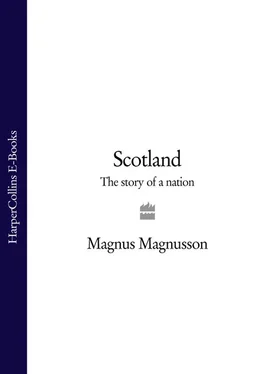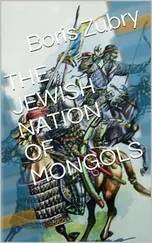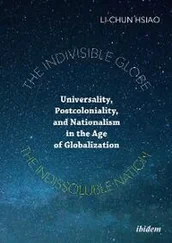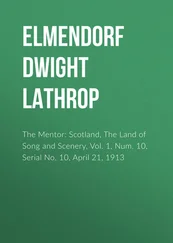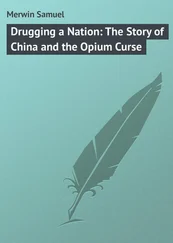Kenneth mac Alpin’s unification of Dalriada and Pictland as a new political entity was a landmark in the evolution of Scotland as a single kingdom. His authority extended from the Moray Firth in the north to the Firth of Forth in the south. This kingdom soon came to be called Alba, the old Gaelic name for Britain as a whole, which was now applied specifically to the territory ruled by Scottish kings.
Kenneth mac Alpin founded the first recognisably Scottish royal dynasty, and as a result Scotland’s kings are formally numbered from him as Kenneth I. However, the perceived significance of Kenneth mac Alpin in the origins of the Scottish nation is now diminished in the eyes of modern historians. Ted Cowan backs another king as the real creator of the kingdom we now call Scotland; his name was Constantin II (Constantín mac Áeda), and he ruled from 900 to 943:
In my view, Constantín mac Áeda was Scotland’s equivalent of England’s King Alfred, and he should be on the lips of every schoolchild in this country. Perhaps the only reason that he isn’t is because his Gaelic name looks so difficult to pronounce! This Constantín did two things. First, he married members of his family into the viking war-bands and bought peace with them in that way. Second, he manufactured a new origin myth for the ‘Scots’ to give them a pedigree which showed how the Picts and Scots were related.
The ‘original’ Scottish origin myth traced the lineage of the Scoti back to Biblical times: they were descended from an Egyptian princess named Scota, the daughter of the Pharaoh of the Oppression (Ramses II, 1304–1237 BC). This enterprising princess left Egypt shortly after the Israelites crossed the Red Sea. She wandered for 1,200 years in the deserts of the eastern Mediterranean, before crossing to Sicily and making her way through the Pillars of Hercules (Straits of Gibraltar), through Spain and then across to Ireland. In her baggage she brought the block of sandstone, weighing 152 kilograms, which was reputed to have been used as a pillow by Jacob when, according to Genesis 28, he had his celebrated dream about Jacob’s Ladder (‘I am the Lord God of Abraham thy father, and the God of Isaac: the land whereon thou liest, to thee will I give it, and to thy seed’). From the east coast of Ireland, Scota beheld her own Promised Land – Scotland – and crossed over to it with Jacob’s sacred Stone.
Constantin II, according to Ted Cowan, made a significant addition to this imaginative account: he instructed his bards to give Scota a husband – Gaedel Glas (Gathelos), a Prince of Scythia and ancestor of the Picts. That gave the Picts and the Scots a common ancestry, as a deliberate part of the nation-building on which Constantin II was engaged. As part of the redefining of the new integrated kingdom, Scota’s far-travelled Stone was moved to Scone, where it was put to use as the seat on which the rulers of the united Scottish kingdom were inaugurated – the ‘Stone of Scone’ or ‘Stone of Destiny’, as it came to be called.
The origin myth of ‘the Scots’
Your identity, both as an individual and as part of a nation, is crucially determined by where you believe you come from – what your origins are, in effect. There comes a time in the growth of any country when it is both politic and imperative to have a respectable pedigree as a nation. And if you don’t know it, you invent it.
But how and when, in the case of Scotland, was it done? On what basis was this embryonic origin myth manufactured? Dauvit Brown, a lecturer in Scottish History at the University of Glasgow, has made an exhaustive study of early medieval written sources:
The earliest surviving text which propounds the idea, in all seriousness, of Scotland being two thousand years old was written during the 1290s, during the ill-fated reign of John Balliol [see Chapter 9]. It is basically a king-list, but it also includes an account of Scottish origins, explaining that the original Scots were descended from Gaedel Glas and Scota, and came from Egypt and eventually ended up in Scotland. The length of reigns in the king-list, we are told, added up to 1,976 years to the coronation of John Balliol in 1292.
The way it was achieved was by an ingenious and simple use of the available material. There was a list of kings from Kenneth mac Alpin. There was also a list of about thirty kings from Fergus Mór mac Eirc, the alleged founder of the ‘Scottish’ colony of Dalriada around the year 500. There was also a list of sixty-five-plus Pictish kings. All this material was stitched together and presented as if it were a single series of kings, which totalled 113 (once you had included Robert Bruce).
It is noticeable that this text, elaborating in this rudimentary way the idea that Scotland was an ancient kingdom, was written when Edward I [of England] was knocking on Scotland’s door with a vengeance. This Irish identity gave the kingship of Scotland the authenticity of age which medieval institutions required, through a royal genealogy stretching all the way back to Noah via the Irish king-lists.
Any desire to express Scottish identity as a form of ethnicity has an inherent weakness: there is not any one set of ‘people’ who form the backbone of a group which can be identified as modern Scots. Even in the tenth century this was so, and notions of Scottish ethnicity had to be carefully blended into a constructed notion of Scottish nationality. In the twentieth century, too, the range of peoples and cultures one might mix together when trying to construct a notion of Scottish national identity or national characteristics is as broad as ever. But the one culture still in existence today in Scotland, and the one with the longest track record, is that of the Gaels, who have the strongest claim to being the indigenous people of Scotland.
And that raises a puzzle concerning Walter Scott’s Tales of a Grandfather: the Celts, these Irish progenitors, were given no mention at all in the opening chapter, and very little mention, indeed, throughout the whole book. Why? Alex Woolf, lecturer in Scottish and Celtic History at Edinburgh University, says:
When I first read Tales of a Grandfather, what struck me most was that Scott completely passes over the Irish origin of the Scots; he makes it look as if the Scoti were indigenous people alongside the Picts from earliest times. To understand this attitude, we have to look at the period in which Scott is writing – the beginning of the nineteenth century. He grew up in the eighteenth century, when Catholicism was outlawed in the United Kingdom. There was a great anxiety about Catholicism in Britain and Ireland, and the period in which Scott was writing saw a powerful political movement demanding Catholic emancipation, which came in 1829, towards the end of Scott’s career as a writer. There was much anxiety, particularly in Ireland, about this upswelling of political fervour of a people who were ‘not like us’ – people who were not Protestants, people who still spoke Gaelic (which was totally alien to the ruling élites of both Scotland and England and, indeed, of Ireland). I think it was this linkage of Ireland with the threat of Popery which probably led Scott to feel somewhat ashamed of his Irish antecedents himself.
Ted Cowan agrees:
Walter Scott really fudged this whole issue of the Irish origins of the Scots: it did not particularly suit a Protestant Scot to make a big deal of the fact that the Scots came from Ireland, so he tended to play it down. But it is rather surprising because, in other contexts, Scott was very interested in Scottish myth and legend (and did a good deal himself to add to that myth and legend).
It is in line with his silence over the Irish connection that Sir Walter Scott makes no mention at all of Ted Cowan’s candidate for the first real king of the embryo realm of Scotland – Constantin II.
Читать дальше
